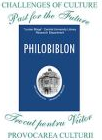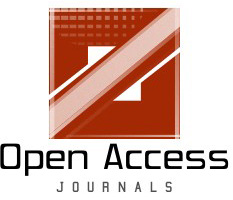Download Cover Page
IJESR_May_2020......
PARTICULAR
|
Page No.
|
 STUDY OF POWER SYSTEM RELIABILITY AND IMPROVEMENT POTENTIAL BY USING DISTRIBUTED GENERATION
STUDY OF POWER SYSTEM RELIABILITY AND IMPROVEMENT POTENTIAL BY USING DISTRIBUTED GENERATION
Lelisa Yazachaw Garamaw, Dr Ing Getachew Biru Worku
Abstract:
The power distribution system in many developing countries has a serious problem of supplying electricity in reliable way. Power interruptions are frequent and long lasting in many of the African developing countries including Ethiopia. This has caused a major economic and social problems. The main purpose of this paper is to evaluate the power reliability of a city in Ethiopia and the potential impacts of Distributed Generation (DG) units on mitigating the power system reliability problem of the network. Distributed power generations are commonly used in distribution system to reduce the power disruption in the power system network which results in a considerable reduction in the total power loss in the system and reliability performances. It is also important to place distributed generation with the right size at an optimal location so that the purpose of power loss minimization and reliability improvement is served on the feeders. Therefore, this study presents the assessment result of the power distributionreliability for Bishoftu city distribution substation and the potential of using distributed generation for improving the urgent andpressing power interruption problems at the area.The new Digsilent power factory software has been used to simulate and verify the improvement of thereliability indices for the distribution system.
Download full Length
Paper......
|
1-14
|
 TOXICITY ASSESSMENT OF TEA LEAVES AND PROCESSED TEA MARKETED IN SONITPUR AND BISWANATH DISTRICTS OF ASSAM, INDIA USING XRF, FAAS AND GC/MS
TOXICITY ASSESSMENT OF TEA LEAVES AND PROCESSED TEA MARKETED IN SONITPUR AND BISWANATH DISTRICTS OF ASSAM, INDIA USING XRF, FAAS AND GC/MS
Dr. Parag Moni Baruah
Abstract:
The aim of this quest was to go for a toxicity assessment of tea leaves and processed tea marketed in Sonitpur and Biswanath districts of Assam in terms of toxic element and residual pesticide contamination. A survey study was carried out to gather information about the pesticides used in some gardens of the concerned region. Samples of tea leaves and processed tea were collected randomly, sundried, treated and analyzed for probable existence of toxic elements and residual pesticides using XRF FAAS and GC/MS. Deltamethrin, Propergite, Glyphosate, Thiomethoxam, 2, 4-D Amine salt and Azadirachtin were found to be the most commonly used pesticides. XRF spectrometric analysis of the samples of tea leaves revealed presence of 16 elements including lead, a toxic metal element. Quantitative estimation of lead employing FAAS, however, shows its concentration below detection limit (0.0001 ppm) of the instrument and much lower than the WHO Permissible standards (10 ppm). GC/MS analysis has shown evidence of 20 compounds in the analyzed processed tea samples. But, none of the pesticides currently in use matched with the detected compounds. The overall results indicated that the samples analyzed are not in a toxic state and considered safe for consumption.
Download full Length
Paper......
|
15-21
|
 APPROACH RUASHI MINING PLANTS TRIED LUBUMBASHI (DR CONGO) (Case of the company RUASHI MINING S.A.S)
APPROACH RUASHI MINING PLANTS TRIED LUBUMBASHI (DR CONGO) (Case of the company RUASHI MINING S.A.S)
Ph. CHISUNKA KAMPOLOBWE, M.SANGWA MWANA,M. KAYEMBE MUSALA, C. KAMANDA MBAYO et H.ILUNGA MBAYO
Abstract:
Mining and the assessment of compliance with environmental obligations, the process used by RUASHI Mining for the production of copper, cobalt hydroxides and the production of sulfuric acid produced on site within the concession, a impact Study Environmental and Social (ESIA) company RUASHI MINING SAS, a field visit to the assessment of the environmental status of sites, the physical, biological and sociological environments.
Download full Length
Paper......
|
22-45
|
 Comparative study of Determination of Liquid limit by Percussion cup, Cone and Improved ko-Stress Methods
Comparative study of Determination of Liquid limit by Percussion cup, Cone and Improved ko-Stress Methods
1A. Sathyanarayan and 2Dr. Ravindra P K
|
46-62
|
 Deoxyribonucleic Acid as A Problem-Solving Tool
Deoxyribonucleic Acid as A Problem-Solving Tool
Dr. Usha Rani Singh
|
63-68
|
 A STUDY ON PROTEIN BIOCHIP
A STUDY ON PROTEIN BIOCHIP
Dr Anjali Bhartiya
|
69-71
|
 Role of Crystallinity in Determining the Electrical and Optical Properties of Nanomaterials
Role of Crystallinity in Determining the Electrical and Optical Properties of Nanomaterials
Molimma Joseph
Abstract:
he idea of crystallinity is among the best factors that dictate electronic and optical properties of nano-materials since it directly dictates distribution of defects, density of grain boundaries and quantum confinement effects
Download full Length
Paper......
|
72-82
|




 Call for Papers
Call for Papers












